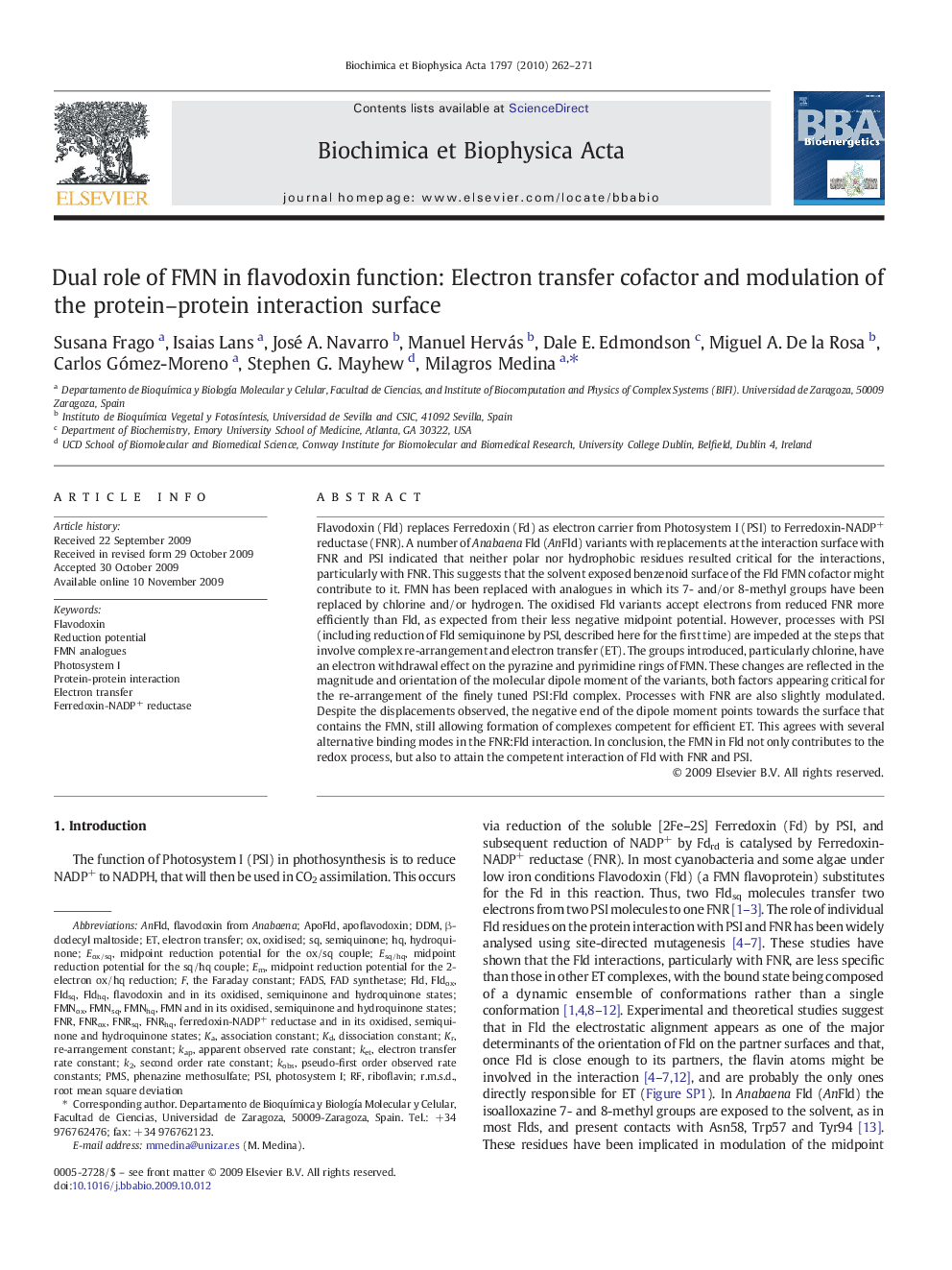| Article ID | Journal | Published Year | Pages | File Type |
|---|---|---|---|---|
| 10795971 | Biochimica et Biophysica Acta (BBA) - Bioenergetics | 2010 | 10 Pages |
Abstract
Flavodoxin (Fld) replaces Ferredoxin (Fd) as electron carrier from Photosystem I (PSI) to Ferredoxin-NADP+ reductase (FNR). A number of Anabaena Fld (AnFld) variants with replacements at the interaction surface with FNR and PSI indicated that neither polar nor hydrophobic residues resulted critical for the interactions, particularly with FNR. This suggests that the solvent exposed benzenoid surface of the Fld FMN cofactor might contribute to it. FMN has been replaced with analogues in which its 7- and/or 8-methyl groups have been replaced by chlorine and/or hydrogen. The oxidised Fld variants accept electrons from reduced FNR more efficiently than Fld, as expected from their less negative midpoint potential. However, processes with PSI (including reduction of Fld semiquinone by PSI, described here for the first time) are impeded at the steps that involve complex re-arrangement and electron transfer (ET). The groups introduced, particularly chlorine, have an electron withdrawal effect on the pyrazine and pyrimidine rings of FMN. These changes are reflected in the magnitude and orientation of the molecular dipole moment of the variants, both factors appearing critical for the re-arrangement of the finely tuned PSI:Fld complex. Processes with FNR are also slightly modulated. Despite the displacements observed, the negative end of the dipole moment points towards the surface that contains the FMN, still allowing formation of complexes competent for efficient ET. This agrees with several alternative binding modes in the FNR:Fld interaction. In conclusion, the FMN in Fld not only contributes to the redox process, but also to attain the competent interaction of Fld with FNR and PSI.
Keywords
DDMapoflavodoxinFAD synthetaseFNRr.m.s.d.FLDKETFADSPSIPMSKAPFerredoxin-NADP+ reductaseelectron transferProtein-protein interactionElectron transfer rate constantAssociation constantDissociation constantRiboflavinphotosystem IFlavodoxinphenazine methosulfateroot mean square deviationSemiquinoneHydroquinoneReduction potentialkobs
Related Topics
Life Sciences
Agricultural and Biological Sciences
Plant Science
Authors
Susana Frago, Isaias Lans, José A. Navarro, Manuel Hervás, Dale E. Edmondson, Miguel A. De la Rosa, Carlos Gómez-Moreno, Stephen G. Mayhew, Milagros Medina,
